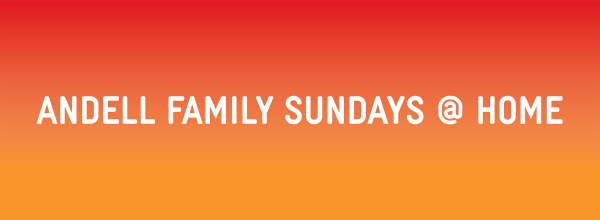African American artist Jacob Lawrence is known for making art about Black history. His most famous works were paintings of important people or historical moments. The Great Migration was a theme throughout his life. The Great Migration was the period of time in American history when many African Americans migrated from Southern states to Northern states seeking a better life or new opportunities. Lawrence's parents were part of The Great Migration. Eventually Lawrence's family settled in Harlem, New York. Have you ever moved? Have you heard stories about your family moving?
Lawrence started making art when he was a child in an after-school program in Harlem. Maybe you've also made art in a special program or at school—in person or via video!
When Lawrence was older, and already famous, he and a bunch of other artists were invited to commemorate the 200th anniversary of the Declaration of Independence (another historic moment!). They were asked to make art in response to this question: What does independence mean to you?
Lawrence's answer: The right to vote!
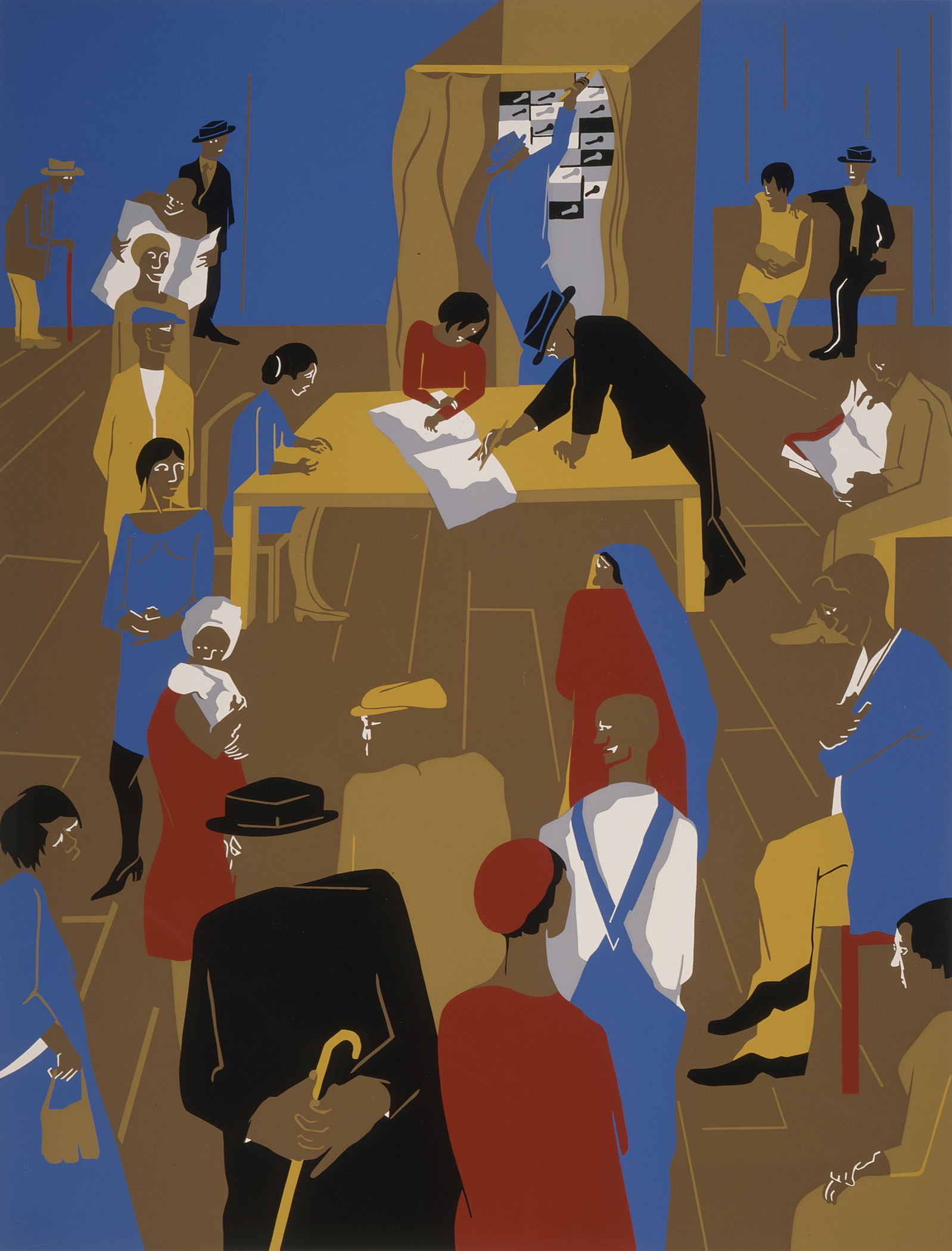
Lawrence made the print The 1920's…The Migrants Arrive and Cast Their Ballots to show people voting.
Take a long look at this print. Spend at least a minute. You can set a timer if you want. The longer you look, the more you will see!
Count the number of colors. You'll notice that Lawrence used a limited color palette.
What shapes do you see? Perhaps you'll notice that Lawrence used simplified geometric shapes.
With only a few colors and some simple shapes, Lawrence was able to create a scene of people voting. Can you see the people standing in line with their ballots?
Let's make a collage—in 10 easy steps!
Artists make a lot of choices while making art. The following questions and ideas will help you think like an artist:
Step 1: What will your artwork be about?
Answer this question: What can you do to make your community a better place?
Here are some suggestions:
- Love the Earth: Clean up trash in your neighborhood or at the beach.
- Show Kindness: Help a neighbor or family member with chores.
- Share: Teach a friend or sibling a new skill.
- Raise Money: Fundraise to make a contribution to a cause you care about.
What did you choose? Lawrence's subject was voting. We chose beach clean-up.
Step 2: What supplies will you need?
Some ideas include:
- Pencil
- White paper to sketch
- Construction paper in variety of colors
- Glue stick or liquid glue
- Scissors
- Markers or colored pencils
Step 3: Which direction will your paper go?
Do you want your artwork to be vertical or horizontal?
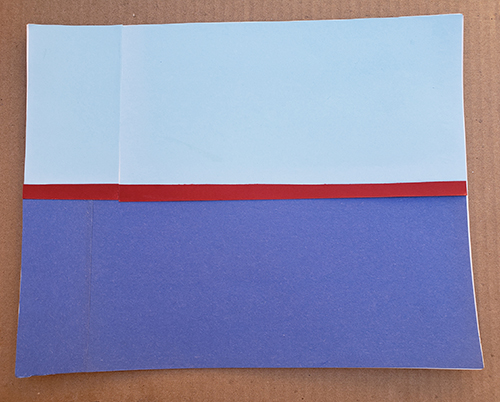
Lawrence's print is vertical and our beach clean-up sample is horizontal.
Step 4: What colors will you use?
Remember that colors help tell your story.
Step 5: Think about what to include in your artwork.
Setting: Where does your good deed take place?
People or animals: Who are the characters in your story?
Objects: What things do you need to tell your story?
Step 6: In pencil, sketch out your ideas on the white paper.
Remember, sketches are practice—they don't have to be perfect!
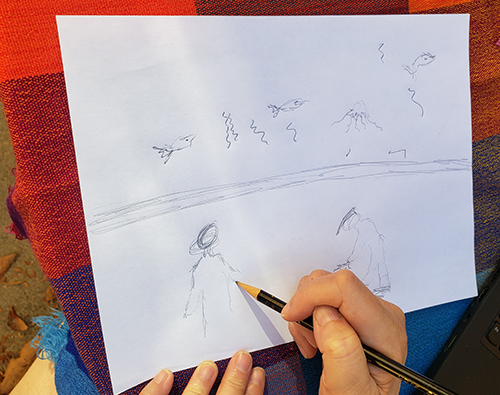
When you are done with your sketch, start cutting out the people and the objects.
Think about:
- What shapes do you want to include?
- What do the shapes represent?
- What colors repeat?
- What shapes repeat?
Step 7: Cut out your elements.
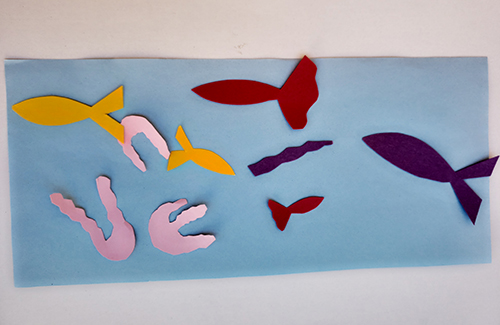
Before gluing them down, place them on the paper to decide what your final design will be.
Step 8: Glue your elements together.
Once you like your final composition, secure the pieces in place with glue.
Step 9: Add some finishing touches.
Draw in the details with markers or colored pencils.
Step 10: Ta-da! You finished your inspirational art!
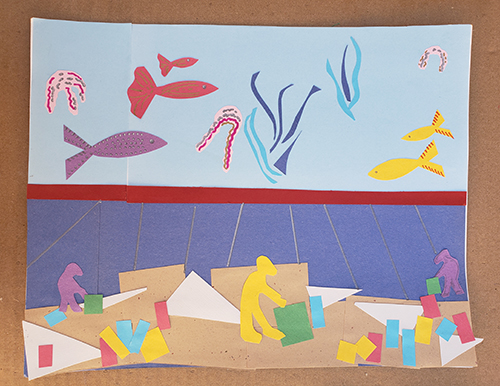
Put your artwork up on a wall to remind you that you can make your community a better place.
Special note from Alicia: When I was a kid, my family loved elections and voting. We spent time talking about the candidates at the dinner table. It was a special time together and it prepared me to vote as an adult. Call to action: make sure that all the adults in your life that can vote, are registered and vote. Exercise your voice!



